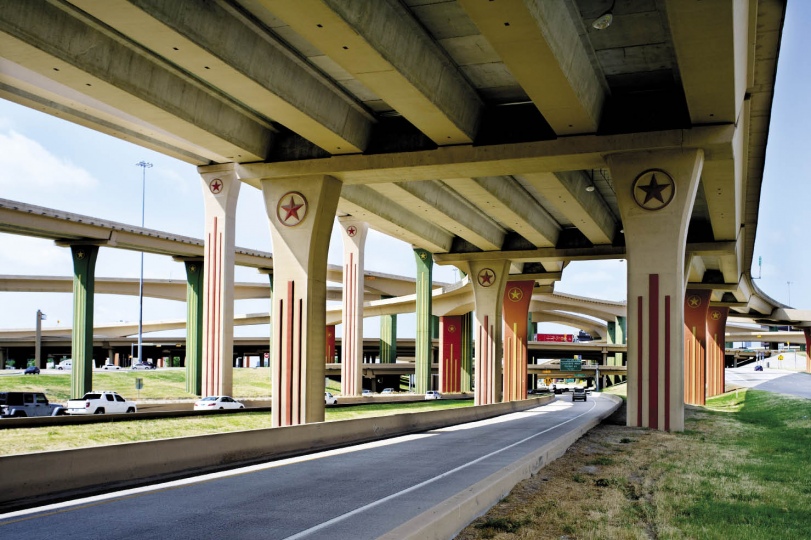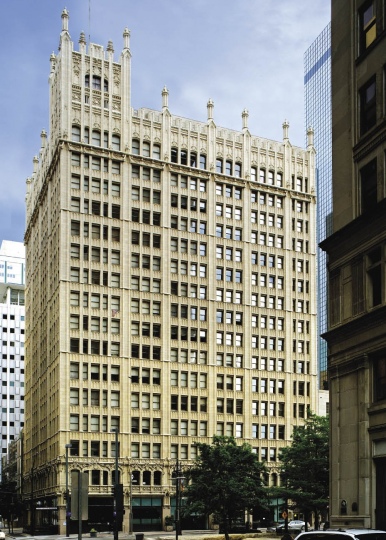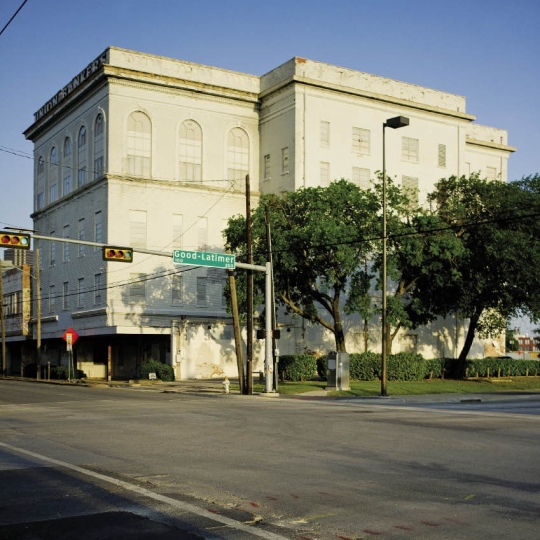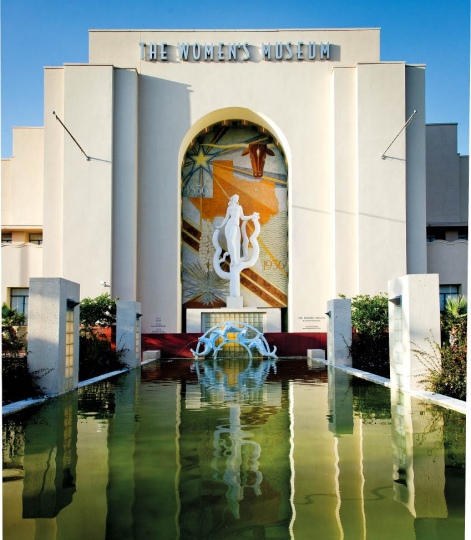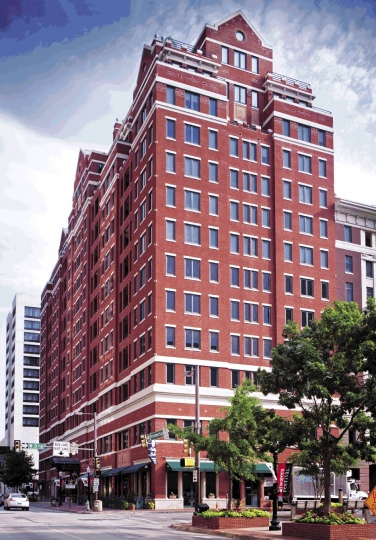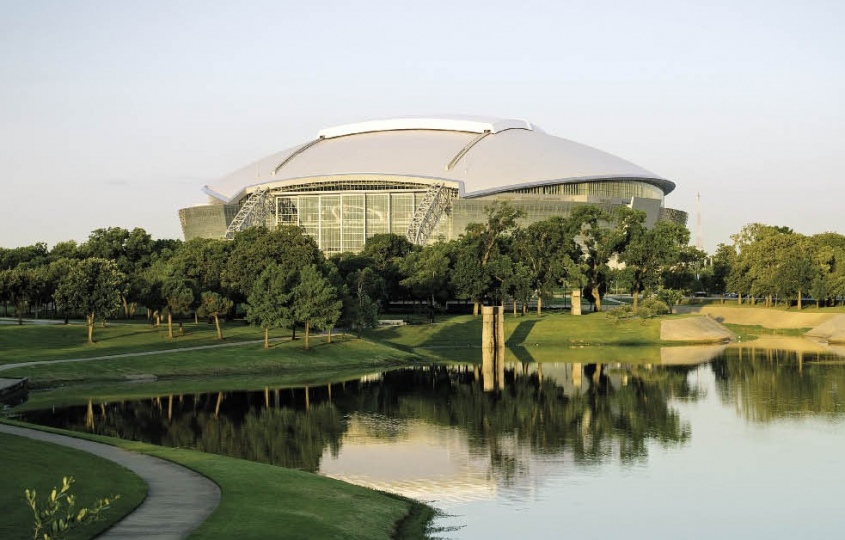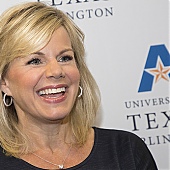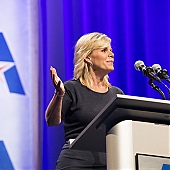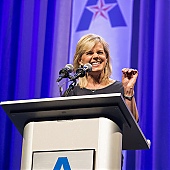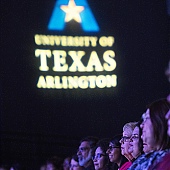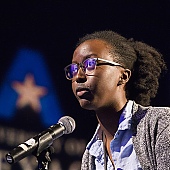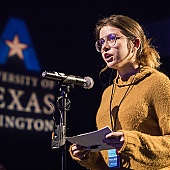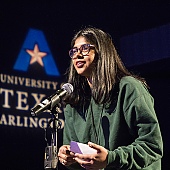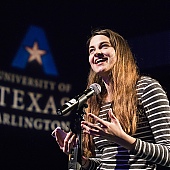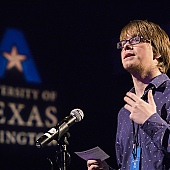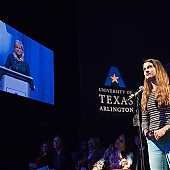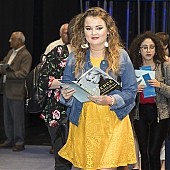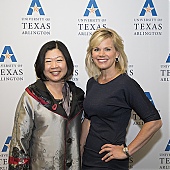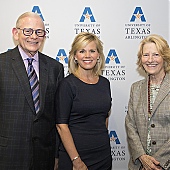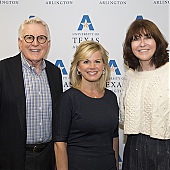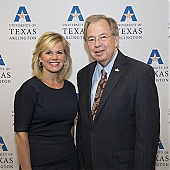FAIR COMMENT
The architecture in Dallas’ Fair Park is among the subjects that critic David Dillon explored.
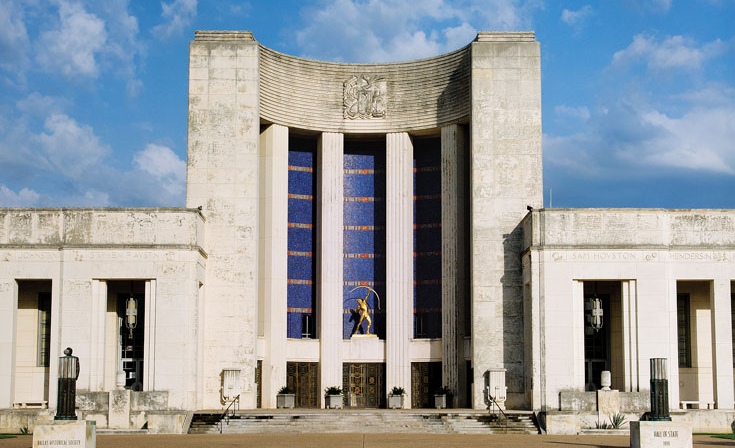
Shaping a Metropolis
UT Arlington’s new David Dillon Center for Texas Architecture provides a forum for discussion about the past, present, and future of architecture in North Texas. In doing so, it strengthens the legacy of its namesake, a respected critic whose words and vision helped the region define its aesthetic identity.
· Summer 2012 · Comment ·
More than 30 years ago, architecture critic David Dillon asked a simple question: Why is Dallas architecture so bad? “Before Reunion Tower and the Hyatt Regency Hotel,” he wrote, “Dallas’ skyline consisted of a flying red horse and a glowing phallic column atop the Republic National Bank, which put it in roughly the same category as Omaha and Indianapolis. When Dallasites talked about their sublime skyline, it was more from wishful thinking than direct observation.”
The city’s skyline has changed dramatically since those provocative words appeared in a 1980 edition of D Magazine, thanks in part to Dr. Dillon’s persistent, pointed reviews. During a long tenure at The Dallas Morning News, he wrote more than 1,000 articles, his words helping shape a metropolitan area and educate a populace.
When Dillon died in 2010, the Metroplex lost its only dedicated architecture critic. Now UT Arlington is helping fill the void with the David Dillon Center for Texas Architecture. An initiative of the School of Architecture, the center supports faculty and students as they investigate the region’s changing architecture and promotes discourse about urbanism in North Texas and beyond.
“Our goal is to serve as a catalyst for notable research and a depository for documents while also providing a forum for public speakers to address important issues of the day,” says Assistant Professor Kate Holliday, the center’s director and an architectural historian.
The center debuted in April with the well-received David Dillon Symposium at the Dallas Museum of Art and the Nasher Sculpture Center. The event explored the changing role of modern architectural criticism. Vanity Fair architecture critic Paul Goldberger gave keynote remarks, and panelists included Christopher Hawthorne from the Los Angeles Times, Alexandra Lange from Design Observer, and Thomas Fisher, dean of the University of Minnesota’s College of Design and former editor of Progressive Architecture.
CENTER OF DISCOURSE
Architectural historian Kate Holliday directs the David Dillon Center for Texas Architecture, which promotes discussion about urbanism in North Texas and beyond.
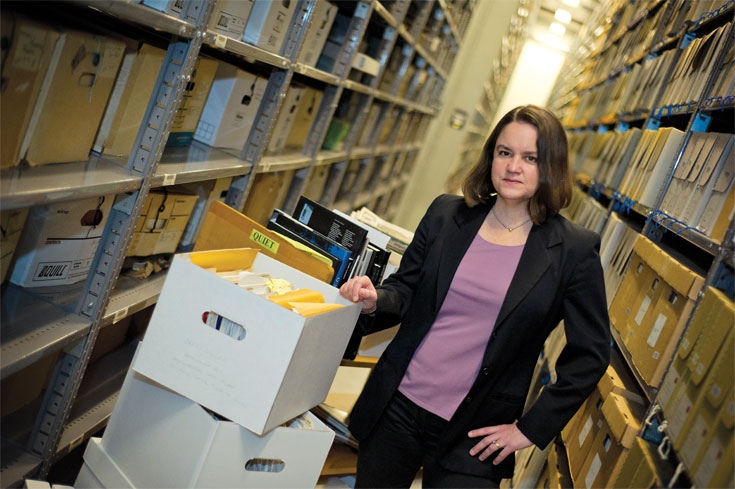
The symposium drew a cross-section of the community, promoting a discussion about the role of writing in understanding design, as well as the role of the media as architecture coverage shifts from newspapers to the Internet. “With the loss of local architecture writing in newspapers like David used to provide, it becomes harder to get news about neighborhoods and urban development,” Dr. Holliday says. “Coverage now tends to focus only on the next big building.”
Dillon joined The Dallas Morning News in 1981 after catching attention with his freelance writing. A graduate of Boston College with master’s and doctoral degrees from Harvard, he wrote several books and hundreds of freelance stories in addition to his newspaper articles. Colleagues credited him with helping shape civic debate on issues across the area, from underdevelopment in South Dallas to sprawl in the northern suburbs.
“David’s body of work over nearly three decades influenced urban design and architecture in Dallas and throughout Texas to an extraordinary degree,” says Robert Decherd, CEO of A.H. Belo Corp., parent company of The Dallas Morning News. “His expertise was recognized nationally.”
Last year Dillon’s wife, Sally, donated his papers to Special Collections in the UT Arlington Library.
“The archive includes a huge range of material,” Holliday says. “It’s a treasure trove filled with reporter’s notebooks, research materials, published materials like his books and articles, edited manuscripts, interview recordings, correspondence with editors and readers, and more. The information it provides will be invaluable to students, scholars, and the community at large.”
Holliday is working with students to put online selections from that archive, including a listing of all of Dillon’s reviews for the News. In addition, the website uta.edu/architecture/research/dillon will contain material gathered for the center’s projects, such as the Oral History of Texas Architecture and DFW Hypercity, which uses GIS and GoogleEarth to present historic maps and model reconstructions of the Metroplex.
Dillon’s News articles include a range of reviews, seven of them excerpted here. They provide a scope of his vision and tone. From a concise summation of Cowboys Stadium to an extended, poetic riff on the region’s highways, he covered the Metroplex in a way few could hope to match.
Though the region may not be able to replace his voice, the David Dillon Center for Texas Architecture celebrates his legacy. By preserving his writings and encouraging the next generation of scholars to produce their own, the center is helping the public think critically about the design—and future—of North Texas.
Selected David Dillon review excerpts
Freeways
Dallas/Fort Worth, 1949-present, various architects
“Freeways are paradigms of form following function, far clearer and more instructive than buildings, particularly over-decorated postmodern buildings. Freeways are concatenations of curves, slopes, and tangents, enlarged diagrams from geometry textbooks. The roadways represent the triumph of the horizontal line over the accidents of topography, while the interchanges and overpasses are heroic minimalist sculptures, the modern equivalent of the Roman aqueducts.” – June 3, 1990
Kirby Building
Dallas, 1913, Barnett, Haynes & Barnett
“The building still has an interior shopping arcade running from Main to Pacific, one of those urban delights that downtown Dallas has forsaken in its frenzy over skybridges and tunnels. And it has a memorable lobby; not large, but, like the façade, surprisingly impressive. The combination of brass, cut-glass mirrors, ornamental plaster and decorative vaulting creates a sumptuous feel that anticipates the grand skyscraper lobbies of the 1920s and ’30s.” – Dec. 26, 1987
Grand Temple of the Black Knights of Pythias
Dallas, 1916, William Sidney Pittman
“Dallas’ first commercial building built for and by blacks, the Black Knights of Pythias Temple was home to doctors, dentists, lawyers, and other professionals. Behind the tall arched windows on the top floors was a large auditorium for meetings, concerts, and rousing parties.” – Feb. 18, 1993
Fair Park
Dallas, 1936, George Dahl
“Fair Park deserves a better shake than either its supporters or its critics are giving it. It is not chic and trendy but populist and irremediably local. Within its 277 acres are vestiges of everything Dallas has been: railhead, retail and marketing center, agricultural hub, football capital of the Southwest. It is also the one thing big enough and compelling enough to change the future of South Dallas.” – Aug. 2, 1992
Sundance West
Fort Worth, 1991, David M. Schwarz
“If America’s downtowns weren’t in such sorry shape, Sundance West might not be getting so much attention. But they are, and it is, for the simple reason that it reaffirms vanishing urban values: lively streets, apartments over shops, multiple uses in a single building. Sundance West does these things in a slightly tony and precious way, but at least it pulls together the right pieces in one spot.” – June 14, 1992
Cowboys Stadium
Arlington, 2009, HKS Sports & Entertainment Group
“Football may be the main attraction at the new Cowboys Stadium, but the structure itself, with its retractable roof, monumental arches and massive video screen, should provide plenty of visual entertainment during those long, dull pauses for network commercials and instant replays.” – June 3, 2009

